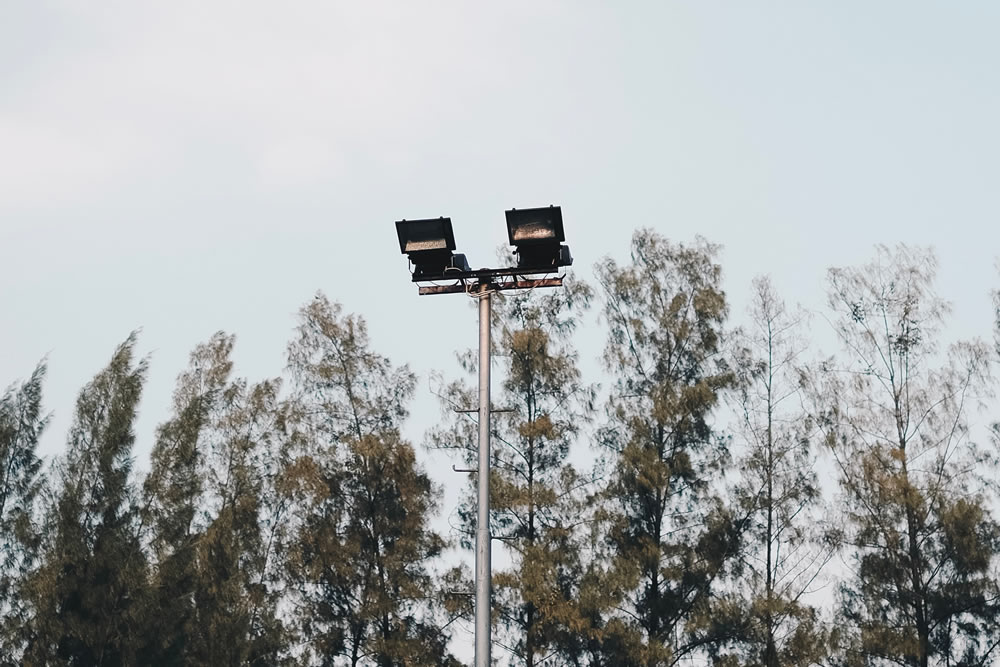The question we often get asked is ‘Can I replace my old metal halide fittings with LED but still use my existing poles?’ Although this question is often asked there is no straight answer, apart from ‘Possibly’. The attractive idea behind this is that the poles generally cost 20% of the total project value and therefore significant savings can be made reusing them. Additionally, with a 14+ week lead time for the poles, the job could be completed a lot sooner with a lot less hassle and mess. The savings to your maintenance budget will also be very attractive in the long run.
The major factors which influence the decision are:
- Do you even know who manufactured the poles?
- If so, what specification were the original poles designed too?
- What physical state are the poles in now? i.e. rust, leaning over etc
- Has an engineer certified them?
- What are the ground conditions and has anything changed since the original install?
Whilst your poles may have happily supported metal halide fittings for many years, LED fittings tend to be around 50% heavier than equivalent metal halides. Additionally many LED’s are mounted up at an angle rather than flat mount like most metal halides. This extra ‘sail area’ is a major factor to be taken into account in the engineering calculations and would be the primary cause of issues, even more so than the weight.
A side note on timber poles would be that most engineers won’t consider certifying them. Therefore the only option would be to replace modules directly with no additional weight or sail area. This will inevitably result in reducing lux levels but this may not be an issue when compared with the hassle of changing bulbs which are increasingly hard to find.
The issue around over-stressing poles is a real one and mustn’t be ignored or taken lightly. We know of clubs who have installed extra lighting themselves without professional input and it resulted in 30m poles falling to the ground. In all these instances no-one was near at the time and therefore no-one was hurt, however the results could have been disastrous! Definitely not a risk worth taking.
With all that being said, there are some general guidelines which will give you an idea of the safety of a direct swap out:
- Know what fittings you currently have installed and at what angle they are installed. This allows you (or a contractor/supplier) to calculate the sail area in relation to the weight. Ideally have a copy of the original installation plan.
- If the new installation is going to increase the weight or the sail area, go back to the pole manufacturer to check if the poles can cope with the extra drag
- If this information is not known, or not available, get an engineer to assess the poles. There are specialist who will be able to professionally assess this information.
- Research lighting suppliers thoroughly and find modules that:
a) Mount horizontal (or almost horizontal)
b) Have reasonable weight compared to your existing fittings.
c) Have drivers that are mounted remotely (reduce weight further)
d) Ideally the system runs the drivers in parallel so you only have one pair of heavy power cables going up the pole
Some installation are so old that a lot of this information is not available. Therefore another option would be to play safe and see if you can reduce the existing light levels. What are the light (lux) levels and what do they need to be in order to comply with common sense function or regulation guidelines? If the lighting designers are innovative they can also reduce the height of mounting (and therefore all other pole-stress factors), use less-heavy fittings and still improve light levels. Do however be aware that reduced height often increases tilt of the lights and therefore may have an influence on glare and spill light. All these are factors to consider but can generally be overcome by thinking laterally.
Conclusion
So in summary, if your facility is looking for a way to save money, reusing poles is definitely an option. However, do the hard work and make sure all the bases are covered. The hard work is nothing compared with the hard work of dealing with a 30m pole that has fallen over with 200kg of lighting attached! Having said all that, once you have gone through the pain, you will be more than compensated by the reduction in your expenses budget over the coming years. Just think of never having to worry about replacement of orange/pink metal halide lamps again (arranging the boom, the electrician, the expenses budget etc!) and it gives you the incentive to push through.
Post time: Apr-09-2021




